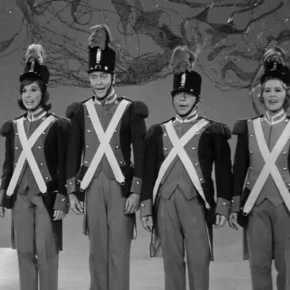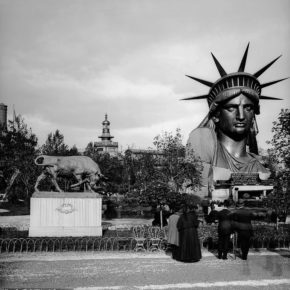When most people I know think of Advent they think of a calendar.
This calendar has 24 doors, often in an artful arrangement. Many times these doors are part of an illustration of a pastoral holiday scene.
The doors open up to a treat of some kind, either an illustration of a gift or an actual gift – or even a piece of candy or chocolate.
It would be easy to think that Advent calendars have been around forever, but they only date back to the mid-1800s. They were handmade affairs in a similar guise to an Advent clock or an Advent wreath (the latter of which used candles – fire and dry pine needles!), meant to count down the 24 days of advent until Christmas Eve. They didn’t have little windows to open at first. Some had holes for candles to be placed, but most were just… calendars.
Advent calendars were popular in Europe at first (especially in Germany), but they really gained traction in the early 20th century due to two innovations: mass production and the invention of a laminated calendar with – you guessed it – little windows that a person could open to reveal hidden pictures. The person who led the charge in this modernization was a man from Swabia (in Germany) named Gerhard Lang.
Most of these early mass-printed advent calendars featured paintings based around the days of Advent, showing family and religious celebrations. Some of the more religious themed calendars had Bible verses behind the doors to guide the calendar’s owner in prayer leading to Christmas Eve.
While the production and popularity of these calendars grew throughout the 1920s and 1930s, the entire industry was slowed greatly by World War II (not exactly shocking) as cardboard was rationed and (for reasons that are not overly clear) pictures were forbidden for use in calendars. Once the production of opening-door printed Advent calendars resumed in 1946, a classic design – “The Little Town” – was introduced by Richard Sellmer, owner of Sellmer Verlag. This design is still produced in 2020.
After the war the popularity of the calendars truly took off, with production worldwide and new designs taking off. The 1950s saw the arrival of chocolate-filled Advent calendars. In the U.S. the Advent calendar’s popularity is commonly traced to President Dwight D. Eisenhower, who was photographed opening doors on an Advent calendar during his presidency – and everybody wanted to “be like Ike!”
In recent years there have been tons of new interpretations of Advent calendars. Some towns (mostly in Europe) stage live Advent calendars at central buildings in towns, gathering each night of Advent to reveal a new scene. LEGO® has multiple calendars with different themes (e.g. City, Star Wars, or Harry Potter). Some even go for extreme size, such as the 2007 giant size calendar at St. Pancras Station in London, which at 233 feet tall and almost 76 feet wide holds the Guinness World Record for largest Advent calendar.
In sprite’s and my household, we rotate through a few classic Advent calendars that we reuse every year. At least two of them – if not all of them – are German.
And now sprite runs the modern twist on Advent calendars: this Virtual Advent Tour!
(A fun Advent calendar fact for 2020: if you buy one the day after Christmas and start opening doors that day it’ll count down the days to Inauguration Day in the U.S. – win-win!)
Many thanks to Sellmer Verlag and Mental Floss for providing starting points for researching this post.
















compassionknit
4 December 2020 — 23:20
What a great inaugural idea! I LOVE THIS
yarnmiracle
5 December 2020 — 20:06
We totally bought an art supply advent calendar to count down to inaugeration! (This year, the pre-Christmas one is a puzzle.)
Jo Kay
7 December 2020 — 12:24
So many interesting facts about advent calendars!
Deb Nance at Readerbuzz
9 December 2020 — 07:21
I knew nothing about the history of advent calendars. Thank you for sharing this with us. My friend always buys each year a wonderful advent calendar with a small bottle of wine for each day.